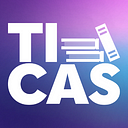A Guide to College Completion with Targeted and Evidenced-Based Strategies
By: Dr. Jhenai Chandler, TICAS
Earning a high-quality degree generates upward mobility for college graduates, but this benefit eludes millions of students unable to complete their college education. The challenge of college completion is an old topic that requires new and targeted solutions. New reports indicate the national six-year college completion rate remains stagnant at 62 percent, with Black, Latinx, and adult learners completing at disproportionately lower rates. According to the National Student Clearinghouse Black, Latinx, and adults over 24 complete at 50 percent, 57 percent, and 56 percent respectively. This suggests traditional one-size fits all policies and interventions are not enough to equitably increase college completion rates across student groups.
College completion is typically attributed to students’ level of “college readiness,” but that narrative has taken a shift as higher education is becoming more “student ready” and equipped to foster success of diverse student populations. Far too many students start their college journey but never see it through graduation day. Barriers like developmental education (remedial courses), hidden costs and finances, limited access to basic needs supports including transportation and childcare are just the tip of the iceberg. Tackling these systemic barriers can increase college completion and improve economic outcomes for many students of color, those from low-income backgrounds, and adult learners without degrees but have the financial burden of student loan debt.
Solving the college completion problem is complex. Fortunately, there are evidenced-based strategies to enhance both policies and practices to improve postsecondary outcomes across student groups. The College Completion Strategy Guide — a collaboration among MDRC, the State Higher Education Executive Officers Association, The Education Trust, and The Institute for College Access & Success — provides clear policy guidance and summarizes the research on strategies to increase college completion. With this strategy guide, state and system policymakers can advance meaningful change in higher education with evidence-based policy.
The College Completion Strategy Guide is a unique set of resources covering a range of topics related to college accessibility, affordability, and accountability at both state and institutional levels. Readers will find practical steps to center equity in policy design and implementation to tackle both academic and non-academic barriers of diverse student populations, especially strategies that can help improve the college completion rate for Black, Latinx, adult students, and students from lower socioeconomic backgrounds.
For states to meet their attainment goals, economic and workforce demands, they must increase the number of people earning a postsecondary degree or credential. This is only possible with targeted and comprehensive approaches that focus on the needs of students disproportionately impacted by systematic barriers. Scaling and sustaining these strategies should be a priority in order to create a robust talent pool and thriving economy.
Dr. Jhenai Chandler is the director of college completion at The Institute for College Access & Success
Originally published at https://ticas.org on December 6, 2022
